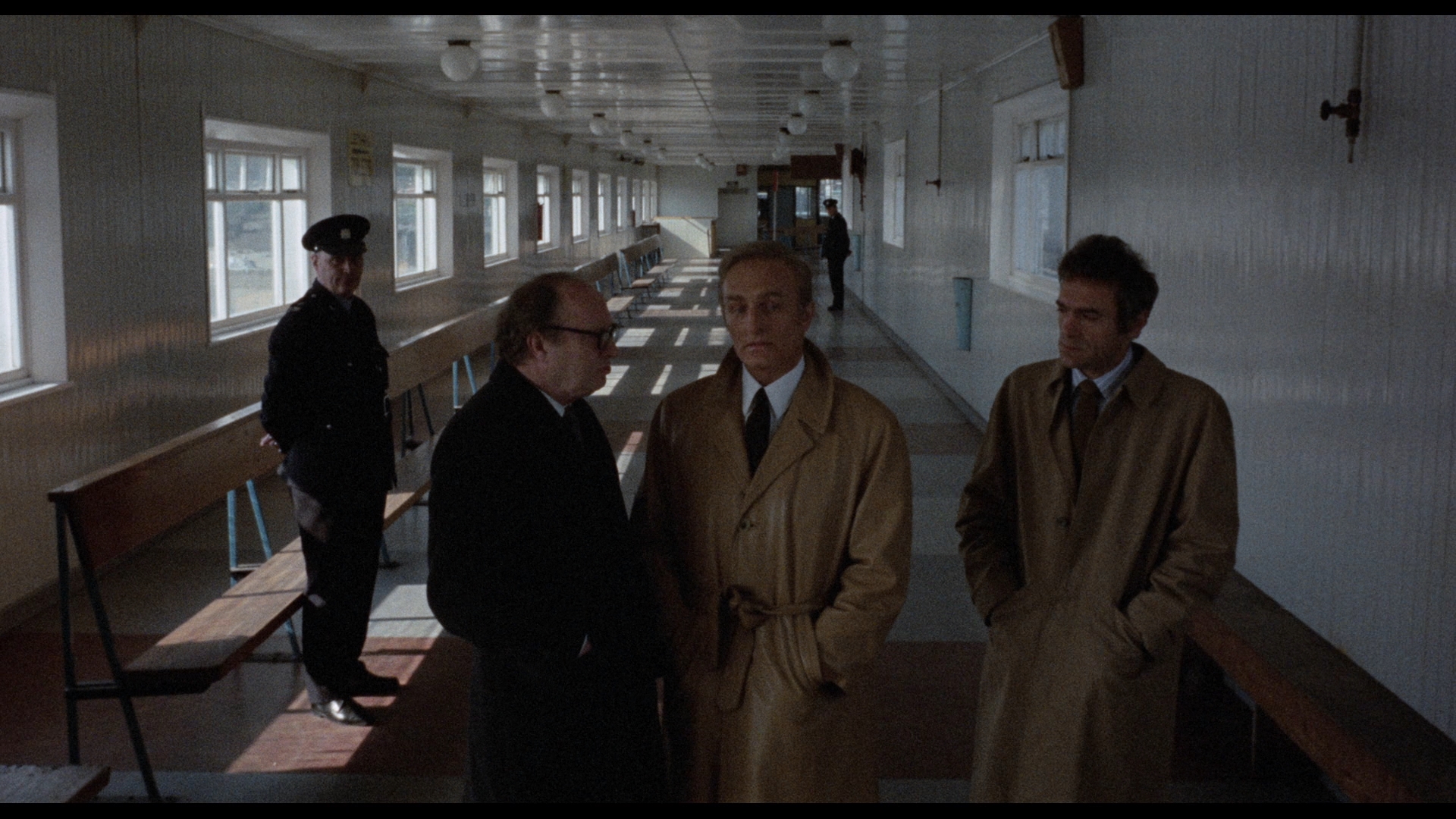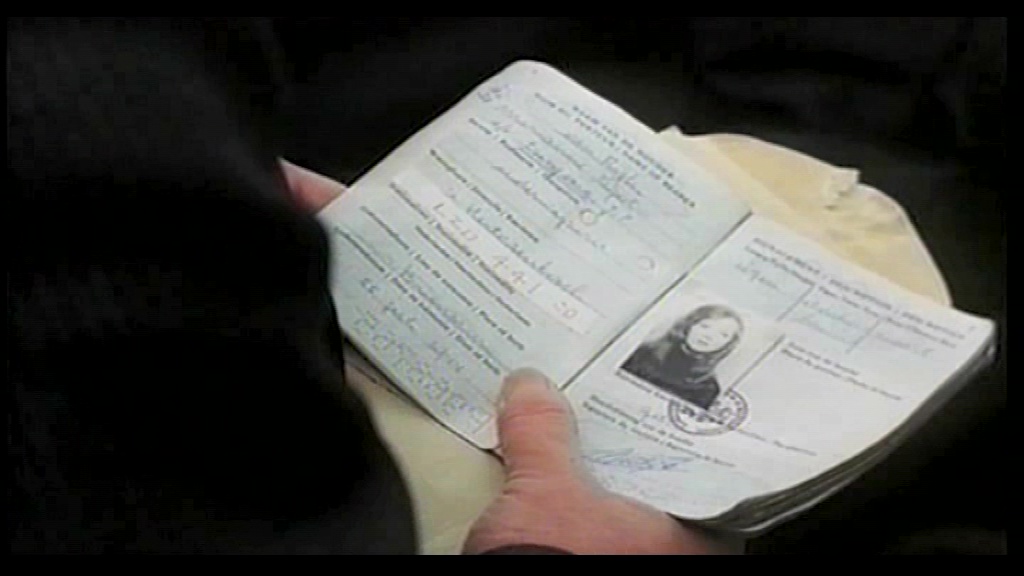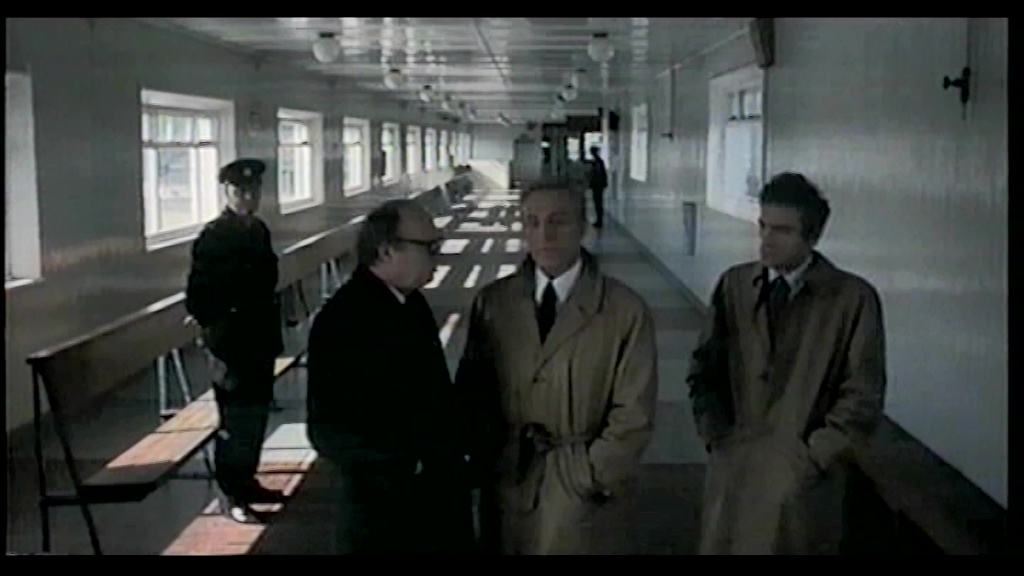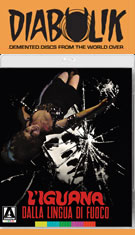

Color, 1971, 95 mins. 39 secs.
Directed by Riccardo Freda
Starring Luigi Pistilli, Dagmar Lassander, Anton Diffring, Arthur O'Sullivan, Werner Pochath, Valentina Cortese
Arrow Video (Blu-ray) (US/UK RA/RB HD), New Entertainment World (DVD) (Germany R0 PAL) / WS (1.85:1) (16:9)
 best known for his stylish
best known for his stylish  horror classics like The Horrible Dr. Hichcock, Caltiki, and The Ghost, director Riccardo Freda spent his career hopping around genres including an inevitable brief sojourn into the Italian thriller variant known as the giallo, which was all the rage in the late '60s and early '70s. His underrated giallo-krimi hybrid Double Face got the ball rolling and his final film, Murder Obsession, injected the formula with a dose of supernatural horror, but his purest contribution came somewhere in between with the Dublin-set The Iguana with the Tongue of Fire.
horror classics like The Horrible Dr. Hichcock, Caltiki, and The Ghost, director Riccardo Freda spent his career hopping around genres including an inevitable brief sojourn into the Italian thriller variant known as the giallo, which was all the rage in the late '60s and early '70s. His underrated giallo-krimi hybrid Double Face got the ball rolling and his final film, Murder Obsession, injected the formula with a dose of supernatural horror, but his purest contribution came somewhere in between with the Dublin-set The Iguana with the Tongue of Fire.  while contending with other oddballs including the ambassador's neurotic stepson, Marc (Bloodlust's Pochath). Meanwhile the killer, decked out in a fashionable pair of sunglasses, keeps bumping people off in the ambassador's circle of
while contending with other oddballs including the ambassador's neurotic stepson, Marc (Bloodlust's Pochath). Meanwhile the killer, decked out in a fashionable pair of sunglasses, keeps bumping people off in the ambassador's circle of  acquaintances as Norton closes in on the shocking truth.
acquaintances as Norton closes in on the shocking truth.  featured very little color correction and didn't impress much at all. (Being PAL, it runs shorter at 91m43s.) Audio options are presented in English or German mono and a very superfluous 5.1 remix. The DVD also includes an image gallery, a fuzzy promo trailer, a German-language essay about Freda, and
featured very little color correction and didn't impress much at all. (Being PAL, it runs shorter at 91m43s.) Audio options are presented in English or German mono and a very superfluous 5.1 remix. The DVD also includes an image gallery, a fuzzy promo trailer, a German-language essay about Freda, and 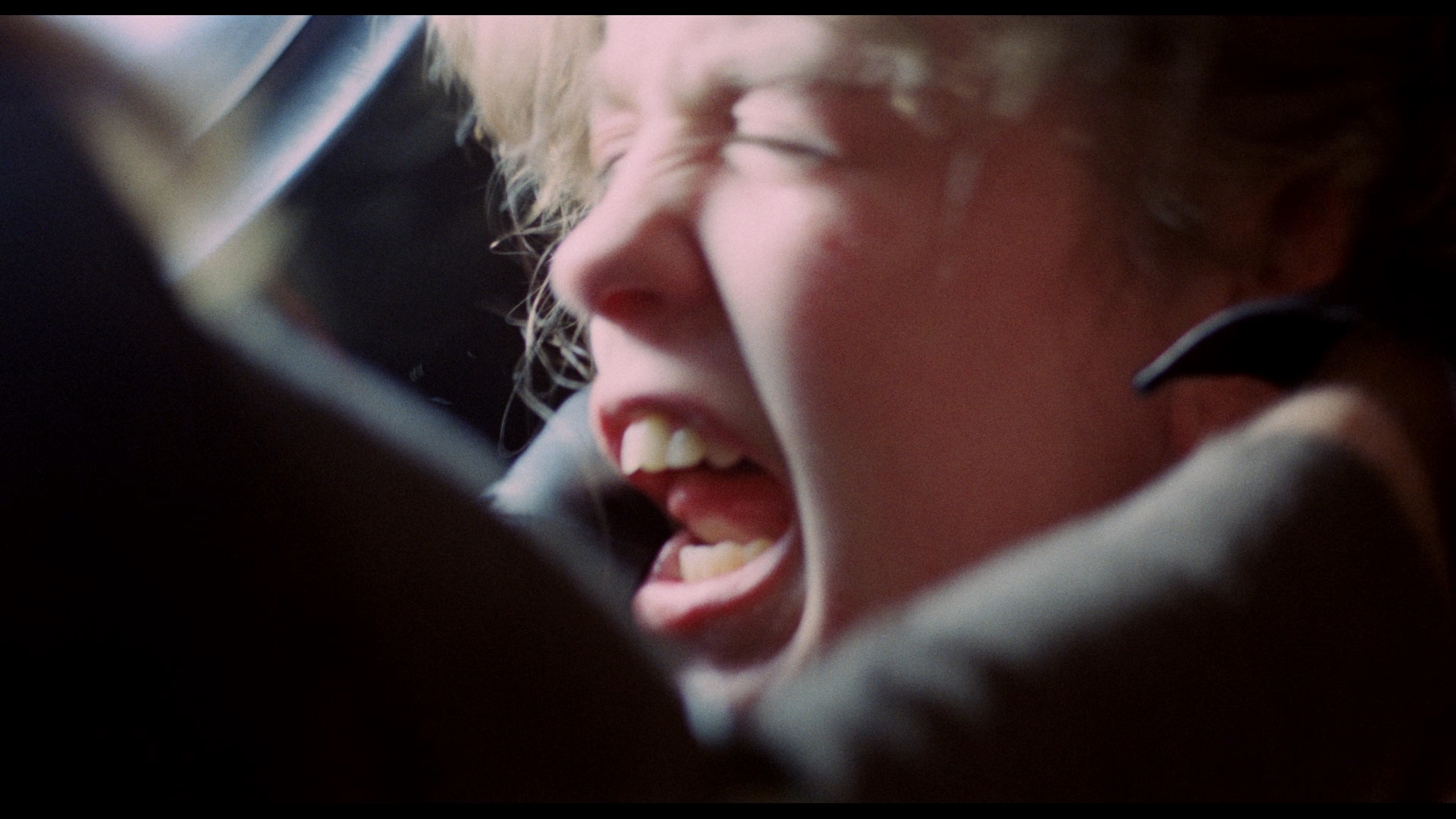 bonus trailers for Caroline Cherie, Shogun's Ninja, and The Boss. Fortunately you can retire that one in the wake of Arrow Video's 2019 Blu-ray edition, which looks terrific and finally gives the film a respectable presentation. The shots of Dublin and the coast of Ireland look especially good, and the proper day for night color timing has been restored where needed including the opening murder (see the second frame grab comparison below). As usual you can view the film in its English or Italian versions (with respective credit sequences) in LPCM mono with English subtitles, either SDH or translated from the Italian. The film was shot in English with some very good voice work for many of the actors, though the Italian one is interesting for some variations in the dialogue and a few more poetic flourishes here and there. A new audio commentary with "giallo connoisseurs" Adrian J. Smith and David Flint parses out the film's more intricate plot details, covers Fredda's career and desire to cast Roger Moore as the lead(!), and notes some of the more perplexing red herrings. "Of Chameleons and Iguanas" (21m55s) features critic Richard Dyer (in front of a poster for The Nude Vampire) noting some of the film's daffier elements (like all the ginger mustaches among the cast) and exploring some of its more endearing elements like Cortese "camping about." The most interesting passage comes in the second half as he explains how the explanations for the various deaths (murders and otherwise) come from very questionable authority that make the
bonus trailers for Caroline Cherie, Shogun's Ninja, and The Boss. Fortunately you can retire that one in the wake of Arrow Video's 2019 Blu-ray edition, which looks terrific and finally gives the film a respectable presentation. The shots of Dublin and the coast of Ireland look especially good, and the proper day for night color timing has been restored where needed including the opening murder (see the second frame grab comparison below). As usual you can view the film in its English or Italian versions (with respective credit sequences) in LPCM mono with English subtitles, either SDH or translated from the Italian. The film was shot in English with some very good voice work for many of the actors, though the Italian one is interesting for some variations in the dialogue and a few more poetic flourishes here and there. A new audio commentary with "giallo connoisseurs" Adrian J. Smith and David Flint parses out the film's more intricate plot details, covers Fredda's career and desire to cast Roger Moore as the lead(!), and notes some of the more perplexing red herrings. "Of Chameleons and Iguanas" (21m55s) features critic Richard Dyer (in front of a poster for The Nude Vampire) noting some of the film's daffier elements (like all the ginger mustaches among the cast) and exploring some of its more endearing elements like Cortese "camping about." The most interesting passage comes in the second half as he explains how the explanations for the various deaths (murders and otherwise) come from very questionable authority that make the  potentially offensive revelations at the end a bit more interesting. Soundtrack aficionado Lovely Jon appears for another of his in-depth Italian score dives with "Considering Cipriani" (25m58s), charing the late composer's rise
potentially offensive revelations at the end a bit more interesting. Soundtrack aficionado Lovely Jon appears for another of his in-depth Italian score dives with "Considering Cipriani" (25m58s), charing the late composer's rise  through the ranks to the Italian music scene (including playing on cruise ships), his sensitivity to the possibilities of stereo sound, and his reputation for delivering work on time and budget while delivering a string of masterpieces including his breakthrough, The Anonymous Venetian. He also goes into this score in detail of course including the vital presence of female vocalist (and composer in her own right) Nora Orlandi. Assistant editor Bruno Micheli turns up next in "The Cutting Game" (20m58s) for his stories from the trenches including his start on war and peplum titles and moving through more exploitative titles including his fair share of sex films and his time with Freda, "a pretty tough guy" who fired the original female editor and took over primary duties himself on this film. Finally, "The Red Queen of Hearts" (20m38s) features Lassander in another of her extensive chats about her '70s heyday when her striking looks proved to be her primary calling card with her talent managed to keep her in the game. Also included are the Italian and English theatrical trailers and two image galleries, a collection of promotional material (stills, lobby cards, posters, and video art) and a fascinating Cinesex photo novel focusing on the sex scenes with some titillating shots nowhere to be found in the film itself.
through the ranks to the Italian music scene (including playing on cruise ships), his sensitivity to the possibilities of stereo sound, and his reputation for delivering work on time and budget while delivering a string of masterpieces including his breakthrough, The Anonymous Venetian. He also goes into this score in detail of course including the vital presence of female vocalist (and composer in her own right) Nora Orlandi. Assistant editor Bruno Micheli turns up next in "The Cutting Game" (20m58s) for his stories from the trenches including his start on war and peplum titles and moving through more exploitative titles including his fair share of sex films and his time with Freda, "a pretty tough guy" who fired the original female editor and took over primary duties himself on this film. Finally, "The Red Queen of Hearts" (20m38s) features Lassander in another of her extensive chats about her '70s heyday when her striking looks proved to be her primary calling card with her talent managed to keep her in the game. Also included are the Italian and English theatrical trailers and two image galleries, a collection of promotional material (stills, lobby cards, posters, and video art) and a fascinating Cinesex photo novel focusing on the sex scenes with some titillating shots nowhere to be found in the film itself. 



